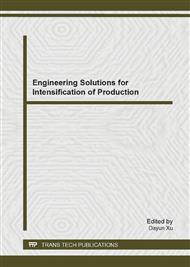[1]
Real World Design Challenge [RWDC]. Real world design challenge. Retrieved from http: /www. realworlddesignchallenge. org.
Google Scholar
[2]
International Test Scores (http: /4brevard. com/choice/international-test-scores. htm).
Google Scholar
[3]
Todd, R. & P. Hutchinson, The Transfer of Design and Technology (D&T) to the United States: A Case Study, The College of New Jersey, Ewing, NJ.
Google Scholar
[4]
Hodgson, T. & C. Allsop Beyond Pro/DESKTOP Computer Aided Design (CAD): the transfer of CAD-based design modelling skills from schools to Higher Education, Department of Design and Technology, Loughborough University, UK, 2002, P. 7.
Google Scholar
[5]
Scheer, M. (2008). DOE to sponsor Real World Design Challenge, for high school students. Retrieved from http: /www. realworlddesignchallenge. org/pdf/News. pdf.
Google Scholar
[6]
The 9 billion-people question. (2011, February 24). The Economist. Retrieved from http: /www. economist. com/node/18200618.
Google Scholar
[7]
Food and Agriculture Organization of the United Nations. (2009, September 23). 2050: A third more mouths to feed. Retrieved from http: /www. fao. org/news/story/en/item/35571.
Google Scholar
[8]
Perry, E.M., Brand, J., Kant, S., & Fitzgerald, G.J. (2012).
Google Scholar
[9]
Platt, J.R., (2011). Career focus: Systems engineering. IEEE Today's Engineer. Retrieved from http: /www. todaysengineer. org/2011/nov/career-focus. asp.
Google Scholar
[10]
Sheard, S.A. (1996). Twelve systems engineering roles. Proceedings of the INCOSE Sixth Annual International Symposium. Retrieved from http: /incose. org/educationcareers/PDF/12-roles. pdf.
DOI: 10.1002/j.2334-5837.1996.tb02042.x
Google Scholar
[11]
Hevers, T.E., Daehler, E.S., & Peck, M.A. (2013). Applying University Small Satellite Program lessons to a career in the aerospace industry. 27th Annual AIAA/USU Conference on Small Satellites.
Google Scholar
[12]
Embry-Riddle Aeronautical University-STEM Academy. (n. d. ). About the STEM initiative. Retrieved from http: /stemacademy. erau. edu/about-us/index. html.
Google Scholar
[13]
Burke da Silva, K. Auburn, Z., Hunter, N., & Young, J. (2008).
Google Scholar
[14]
Annenberg Learner. (n. d. ). Learning science through inquiry: Frequently asked questions. Retrieved from http: /www. learner. org/workshops/inquiry/resources/faq. html.
Google Scholar
[15]
McGrath, M. (2011). Setting the pace in product development . (revised ed. ). New York, NY: Routledge.
Google Scholar
[16]
Terwilliger, B., Shepherd, A., Sanders, B., Khalid, A., Marion, J., Lange, P., & Bourdeau, D. (2013). FY14 state unmanned aircraft system challenge: Precision agriculture, detailed background document. Washington, DC: Real World Design Challenge.
Google Scholar
[17]
Educational Broadcasting Corporation. (2004). Workshop: Inquiry-based learning. Retrieved from http: /www. thirteen. org/edonline/concept2class/inquiry.
Google Scholar
[18]
Rajala, S.A. (2012). Beyond 2020: preparing engineers for the future. Proceedings of the IEEE, 100, 1376-1383.
Google Scholar
[19]
Stephenson, N.L. (n. d. ). Introduction to inquiry based learning. Retrieved from http: /teachinquiry. com/index/Introduction. html.
Google Scholar
[20]
Toscano, M. (2013).
Google Scholar
[21]
University of Arkansas at Little Rock, Department of Systems Engineering. (n. d. ). Outreach. Retrieved from Author website: http: /ualr. edu/systemsengineering/about/outreach.
Google Scholar
[22]
Wilson, D., Kisenwether, E., Capuro, R., Bilen, S. & Nemes, J. (2011).
Google Scholar


